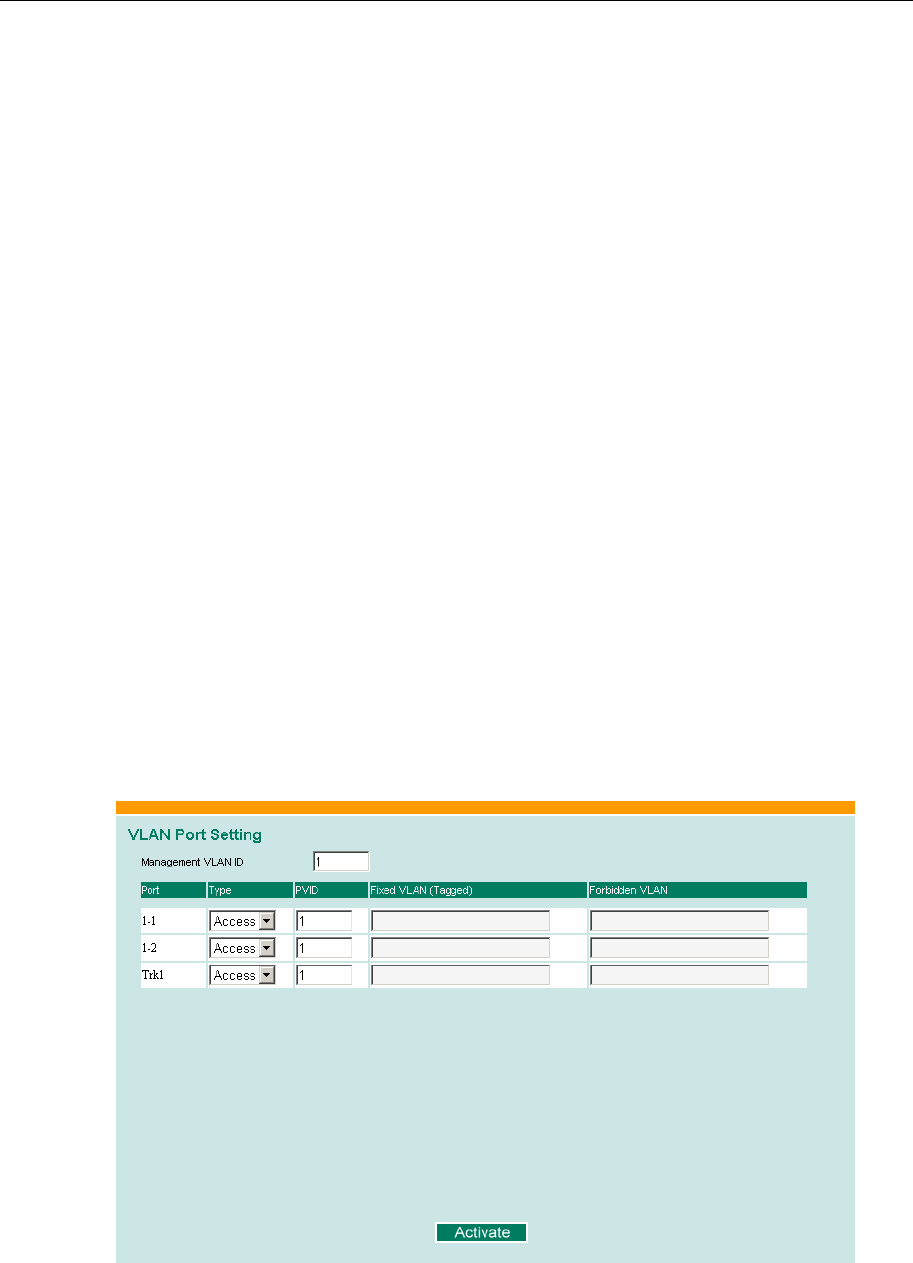
EDS-726 Series User’s Manual Featured Functions
3-40
y Port 3 connects with another switch. It should be configured as “Trunk Port.” GVRP protocol
will be used through the Trunk Port.
y Port 4 connects a single untagged device and assigns it to VLAN 2; it should be configured as
“Access Port” with PVID 2.
y Port 5 connects a single untagged device and assigns it to VLAN 3; it should be configured as
“Access Port” with PVID 3.
y Port 6 connect a single untagged device and assigns it to VLAN 5; it should be configured as
“Access Port” with PVID 5.
y Port 7 connects a single untagged device and assigns it to VLAN 4; it should be configured as
“Access Port” with PVID 4.
After proper configuration:
y Packets from device A will travel through “Trunk Port 3” with tagged VID 5. Switch B will
recognize its VLAN, pass it to port 6, and then remove tags received successfully by device G,
and vice versa.
y Packets from device B and C will travel through “Trunk Port 3” with tagged VID 2. Switch B
recognizes its VLAN, passes it to port 4, and then removes tags received successfully by
device F, and vice versa.
y Packets from device D will travel through “Trunk Port 3” with tagged VID 3. Switch B will
recognize its VLAN, pass to port 5, and then remove tags received successfully by device H.
Packets from device H will travel through “Trunk Port 3” with PVID 3. Switch A will
recognize its VLAN and pass it to port 2, but will not remove tags received successfully by
device D.
y Packets from device E will travel through “Trunk Port 3” with tagged VID 4. Switch B will
recognize its VLAN, pass it to port 7, and then remove tags received successfully by device I.
Packets from device I will travel through “Trunk Port 3” with tagged VID 4. Switch A will
recognize its VLAN and pass it to port 2, but will not remove tags received successfully by
device E.
Configuring 802.1Q VLAN
VLAN Port Settings


















